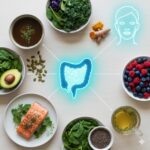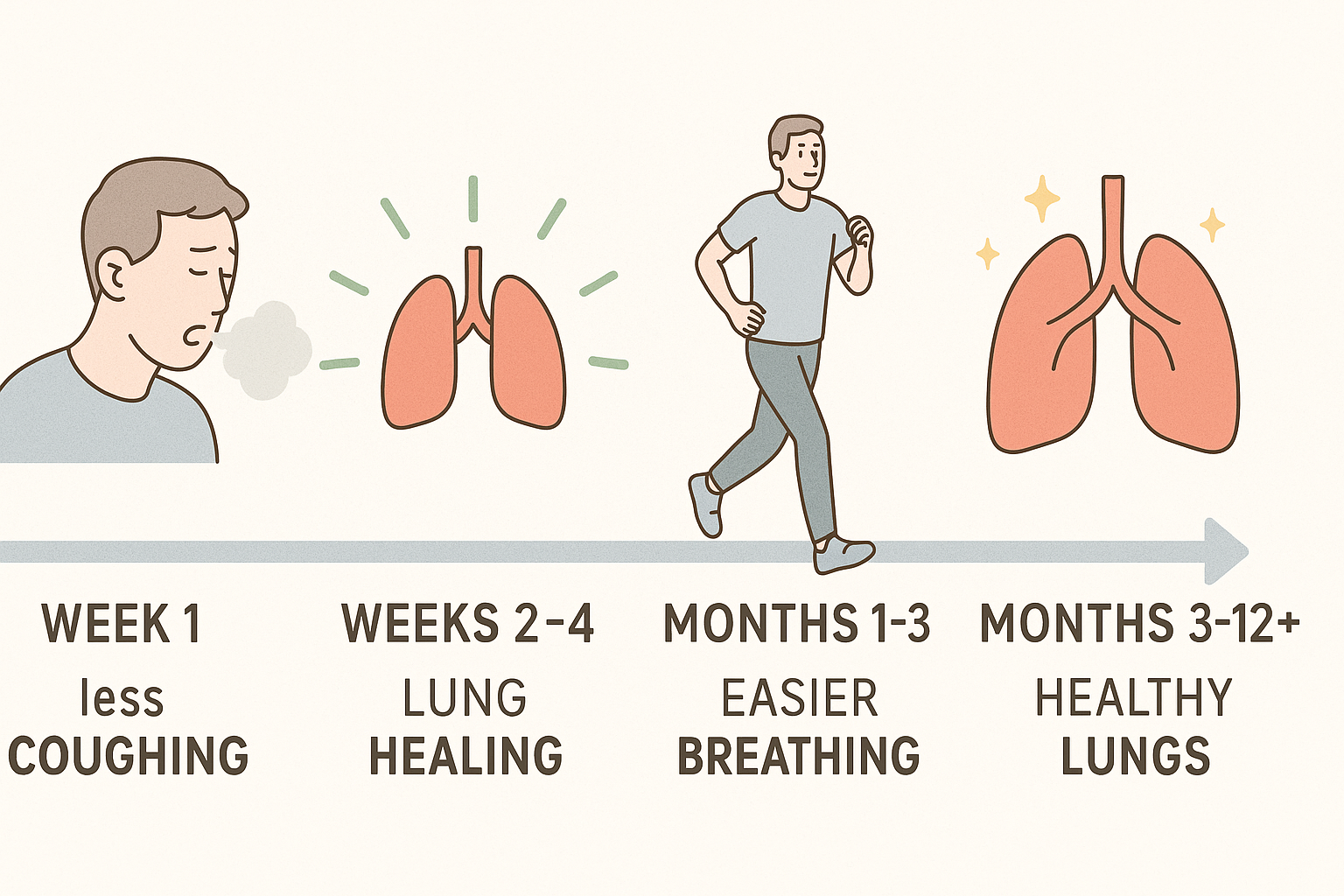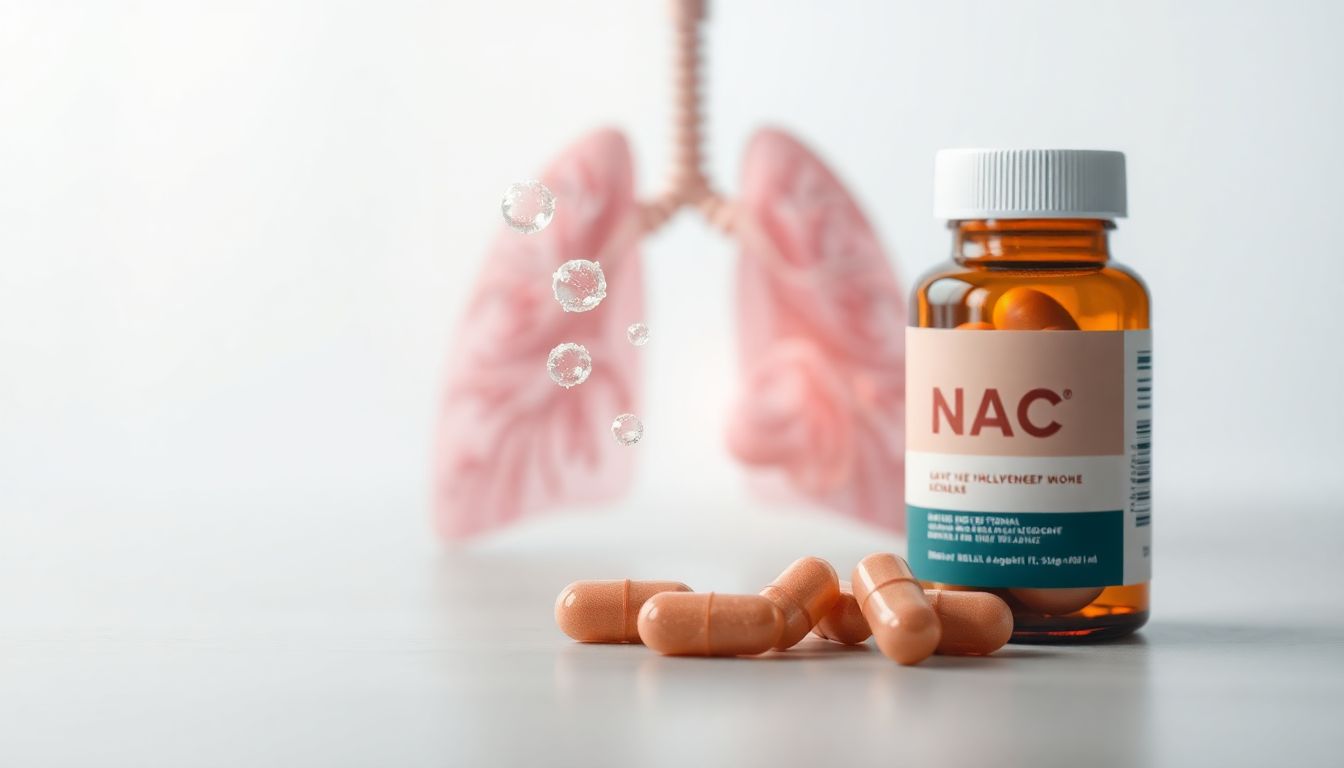That feeling of mucus so thick and stubborn that no amount of coughing seems to budge it. You’ve tried steam, herbs, breathing exercises… but the congestion feels like cement in your chest.
What if there was a supplement so effective at breaking down mucus that hospitals use it intravenously for emergency respiratory cases?
Meet NAC (N-Acetylcysteine) – the powerful antioxidant and mucus-dissolver that’s been used in clinical medicine for over 50 years. While you might be discovering it now, pulmonologists have been prescribing it for decades to help patients with COPD, bronchitis, and cystic fibrosis clear life-threatening mucus.
But here’s what most people don’t know: NAC doesn’t just thin mucus—it addresses the root causes of excessive mucus production while protecting your lung cells from damage.
Here’s how this hospital-grade supplement can help you break through stubborn congestion and breathe freely again.
What Exactly is NAC and Why Do Hospitals Use It?
NAC (N-Acetylcysteine) is a modified form of the amino acid cysteine. What makes it special is the “acetyl” group attached, which allows it to be better absorbed by your body.
In emergency rooms, NAC is administered intravenously to:
- Treat acetaminophen overdose (it protects the liver)
- Break up thick mucus in patients with respiratory failure
- Reduce inflammation in critically ill patients
But the same mechanism that makes it life-saving in hospitals makes it incredibly effective for everyday respiratory issues.
The Dual-Action Power of NAC: Mucus Breakdown + Antioxidant Protection
1. The Mucus-Dissolving Effect
How It Works: NAC breaks the disulfide bonds in mucoproteins—the chemical “glue” that makes mucus thick and sticky. Think of it like cutting the ropes that hold mucus together.
The Science: A comprehensive review in Respiratory Medicine found that NAC significantly reduces mucus viscosity and improves airway clearance in COPD patients. It doesn’t just make mucus thinner—it actually changes its chemical structure.
The Result: Mucus becomes easier to cough up, reducing that “stuck” feeling in your chest.
2. The Master Antioxidant Effect
How It Works: NAC boosts your body’s production of glutathione—often called the “master antioxidant.” Glutathione is your body’s primary defense against oxidative stress in lung tissue.
The Science: Research shows that people with chronic respiratory conditions often have depleted glutathione levels. NAC helps restore this critical protective system.
The Result: Reduced inflammation, protected lung cells, and decreased long-term damage.
5 Proven Benefits of NAC for Respiratory Health
1. Breaks Down Stubborn Mucus
NAC is particularly effective against the thick, gelatinous mucus that’s hardest to clear. Unlike expectorants that just increase mucus volume, NAC actually changes its composition.
2. Reduces COPD Exacerbations
A study in European Respiratory Review found that long-term NAC use can reduce COPD flare-ups by up to 40%, potentially keeping you out of the hospital.
3. Protects Against Environmental Damage
NAC helps neutralize the oxidative stress caused by pollution, smoke, and other respiratory irritants you encounter daily.
4. Supports Lung Tissue Repair
By reducing inflammation and oxidative stress, NAC creates a better environment for your lungs to heal and regenerate.
5. May Slow Lung Function Decline
Some studies suggest NAC can help preserve lung function over time, particularly in smokers and those with chronic bronchitis.
Who Can Benefit Most from NAC Supplementation?
- Chronic bronchitis sufferers
- COPD patients
- People with frequent respiratory infections
- Those exposed to air pollution or occupational dust
- Smokers and former smokers
- Anyone with stubborn, thick mucus
How to Use NAC for Maximum Benefit
Dosage Guidelines
- Maintenance: 600 mg once daily
- During flare-ups: 600 mg twice daily
- With food: Take with meals to reduce stomach upset
- Timing: Morning and early afternoon (may be stimulating for some)
Important Forms and Considerations
- Regular vs. Sustained-Release: Regular NAC is typically sufficient
- Quality Matters: Look for reputable brands with third-party testing
- Consistency is Key: Benefits build over weeks, not hours
Synergistic Combinations
- With Vitamin C: Enhances antioxidant effects
- With other lung supplements: Can be combined with mullein or other natural expectorants
- With proper hydration: NAC works best when you’re well-hydrated
Safety Profile and Potential Side Effects
NAC is generally well-tolerated, but some people may experience:
- Mild stomach upset (take with food)
- Headache (usually temporary)
- Unpleasant sulfur smell (normal with cysteine-based supplements)
Important Contraindications:
- Asthma patients: Some studies show mixed results—consult your doctor
- Peptic ulcer disease: May worsen symptoms
- Pregnancy/breastfeeding: Limited safety data
- Blood thinners: Theoretical interaction risk
Always consult your healthcare provider before starting new supplements, especially if you have existing health conditions or take medications.
The 3-Month NAC Protocol for Respiratory Health
Weeks 1-2: 600 mg daily – Mucus begins to thin, easier clearance
Weeks 3-8: 600 mg daily – Reduced inflammation, fewer coughing fits
Months 2-3: 600 mg daily – Improved overall respiratory function, reduced flare-ups
Assessment Point: After 3 months, evaluate your progress. Many people continue maintenance dosing, while others use NAC primarily during respiratory seasons or flare-ups.
How NAC Compares to Other Mucus Solutions
While mullein excels at soothing irritated airways and breathing techniques help with mucus clearance, NAC works at the biochemical level to actually change mucus composition.
Think of them as different tools:
- NAC: The chemical dissolver
- Mullein: The soothing expectorant
- Breathing exercises: The physical clearance method
The Bottom Line: Pharmaceutical Power Meets Natural Approach
NAC represents a unique bridge between pharmaceutical science and natural medicine. It’s a single molecule with profound effects on respiratory health, backed by decades of clinical research.
For stubborn, thick mucus that won’t respond to other approaches, NAC might be the missing piece in your respiratory support protocol. It addresses both the symptoms (thick mucus) and the root causes (inflammation, oxidative stress) in a way few other supplements can.
Important: Start low, be consistent, and track your progress. The true benefits of NAC often reveal themselves over weeks and months of regular use.
NAC Supplement: Your Questions Answered
1. How quickly will I notice NAC working for mucus clearance?
Many people notice easier mucus clearance within 3-7 days as mucus becomes less sticky. Maximum benefits for inflammation reduction and antioxidant protection typically take 2-4 weeks of consistent use as glutathione levels build up.
2. Can I take NAC with my prescription medications?
NAC is generally safe with most medications, but there are important exceptions. It may interact with nitroglycerin, blood pressure medications, and blood thinners. Always consult your doctor before combining NAC with prescription drugs, especially if you have heart conditions or take blood thinners.
3. Is there a difference between NAC supplements and the hospital IV form?
It’s the same molecule, different delivery. IV NAC provides immediate, high concentrations for emergencies. Oral supplements provide sustained, lower levels perfect for daily maintenance. The mechanism of action is identical – just the speed and intensity differ.
4. Can NAC help with sinus congestion and post-nasal drip?
Yes, significantly. NAC thins all mucus in your respiratory system, including sinus and nasal mucus. Many users report reduced sinus pressure and less post-nasal drip. For sinus-specific issues, some people also use nasal NAC sprays under medical supervision.
5. What’s the difference between NAC and glutathione supplements?
NAC is a precursor to glutathione – your body uses it to make its own glutathione. Oral glutathione is poorly absorbed, while NAC is well-absorbed and effectively boosts glutathione levels. For respiratory benefits, NAC is generally preferred over direct glutathione supplementation.
6. Are there any foods that naturally contain NAC?
NAC itself isn’t found in foods, but its building blocks are. Foods high in cysteine (which your body can convert to NAC) include: poultry, yogurt, eggs, broccoli, and red peppers. However, you’d need to consume very large amounts to get therapeutic doses, which is why supplementation is often necessary.
7. Can I take NAC long-term, or should I cycle it?
NAC is generally considered safe for long-term use at appropriate doses. Many clinical studies have used it continuously for 6-12 months without issues. Some people choose to cycle (for example, 5 days on, 2 days off) but this isn’t necessary for most users. Listen to your body and consult your healthcare provider.
8. Why does my NAC supplement smell like sulfur?
That’s completely normal! NAC contains sulfur atoms, which naturally have that distinctive smell. It doesn’t indicate spoilage or poor quality. If the smell bothers you, look for enteric-coated capsules that contain the odor, or store your NAC in an airtight container.
9. Can children take NAC supplements?
NAC is sometimes prescribed for children with specific conditions like cystic fibrosis, but always under medical supervision. For general supplement use in healthy children, consult a pediatrician first. Dosage would need to be adjusted based on weight and specific needs.
10. How does NAC compare to over-the-counter mucus thinners like guaifenesin?
Guaifenesin (Mucinex) works by increasing mucus volume and hydration, making it easier to cough up. NAC actually breaks the chemical bonds in thick mucus. They work through different mechanisms and can be complementary. Many people find NAC more effective for stubborn, thick mucus.
🌿 Combine with Natural Remedies
Enhance NAC’s effects with proven herbal support. Discover Mullein: The Ancient Herb That Melts Mucus .
This powerful herbal remedy works synergistically with NAC for comprehensive mucus clearance.

Click on Image above to Learn More










